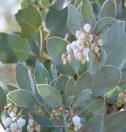Glaucous Willow Tree Information
Images of Glaucous Willow:






Glaucous Willow grows in the following 15 states and provinces:
Alaska, Alberta, British Columbia, Colorado, Idaho, Manitoba, Montana, New Brunswick, New Mexico, Northwest Territories, Ontario, Saskatchewan, Utah, Wyoming, YukonInformation about Glaucous Willow:
The Salix Glauca is commonly known as the Glaucous Willow, Gray Willow, Gray-leaved Willow, Grayleaf Willow as well as White Willow.
The currently accepted scientific name of grayleaf willow is Salix glauca L. . Because it exhibits considerable geographic variation across its extensive range, it has been divided into numerous varieties or subspecies. Argus recognizes three varieties: var. villosa (Hooker) Anderson var. acutifolia (Hooker) Schneider var. glauca Alternately, Hulten recognizes four subspecies: ssp. acutifolia (Hook.) Hult. ssp. callicarpaea (Trautv.) Bocher ssp. desertorum (Richards.) Anderss. ssp. glabrescens (Anderss.) Hult.Grayleaf willow grows throughout most of Alaska except for the Alleutian Islands and along the southeastern coast . It grows through much of northern Canada from Newfoundland northwest to the northern Yukon Territory, and south to southern British Columbia and Alberta. In the contiguous United States, it grows in alpine and subalpine habitats in Montana, Wyoming, eastern Idaho, Colorado, Utah, and northern New Mexico .In Alaska and northwestern Canada, grayleaf willow dominates or codominates numerous seral willow (Salix spp.) and mixed-shrub floodplain communities. Riparian community associates include Alaska willow (S. alaxensis), littletree willow (S. arbusculoides), Richardson willow (S. lanata), diamondleaf willow (S. planifolia), and green alder (Alnus crispa) . It also codominates in some mixed-shrub tundra communities with birches (Betula spp.), alders (Alnus spp.), and other willows . In the Rocky Mountain States, grayleaf willow/tufted hairgrass (Deschampsia cespitosa) communities occupy well-drained, open alpine and upper subalpine habitats . Grayleaf willow occurs as scattered individuals in many boreal forests and woodlands. It is seldom an understory dominant, except in early seral stages. Douglas , however, described a 130- to 160-year-old white spruce (Picea glauca)/grayleaf willow community in southwestern Yukon Territory. Classifications listing grayleaf willow as a dominant in community types (cts) and habitat types (hts) are presented below: Area Classification Authority AK general veg. cts Viereck & Dyrness 1980 sw YT montane veg. cts Douglas 1974 CO: Gunnison & general veg. hts Komarkova 1986 Uncompahgre NF UT, se ID riparian cts Padgett & others 1989 Forest Service R-2 forest, shrub, grass Wasser & Hess 1982 & forb hts Some of the information provided here is attributed to:Uchytil, Ronald J. 1992. Salix glauca. In: Fire Effects Information System, [Online]. U.S. Department of Agriculture, Forest Service, Rocky Mountain Research Station, Fire Sciences Laboratory (Producer). , available at the USDA Fire Effects Information System (FEIS) website